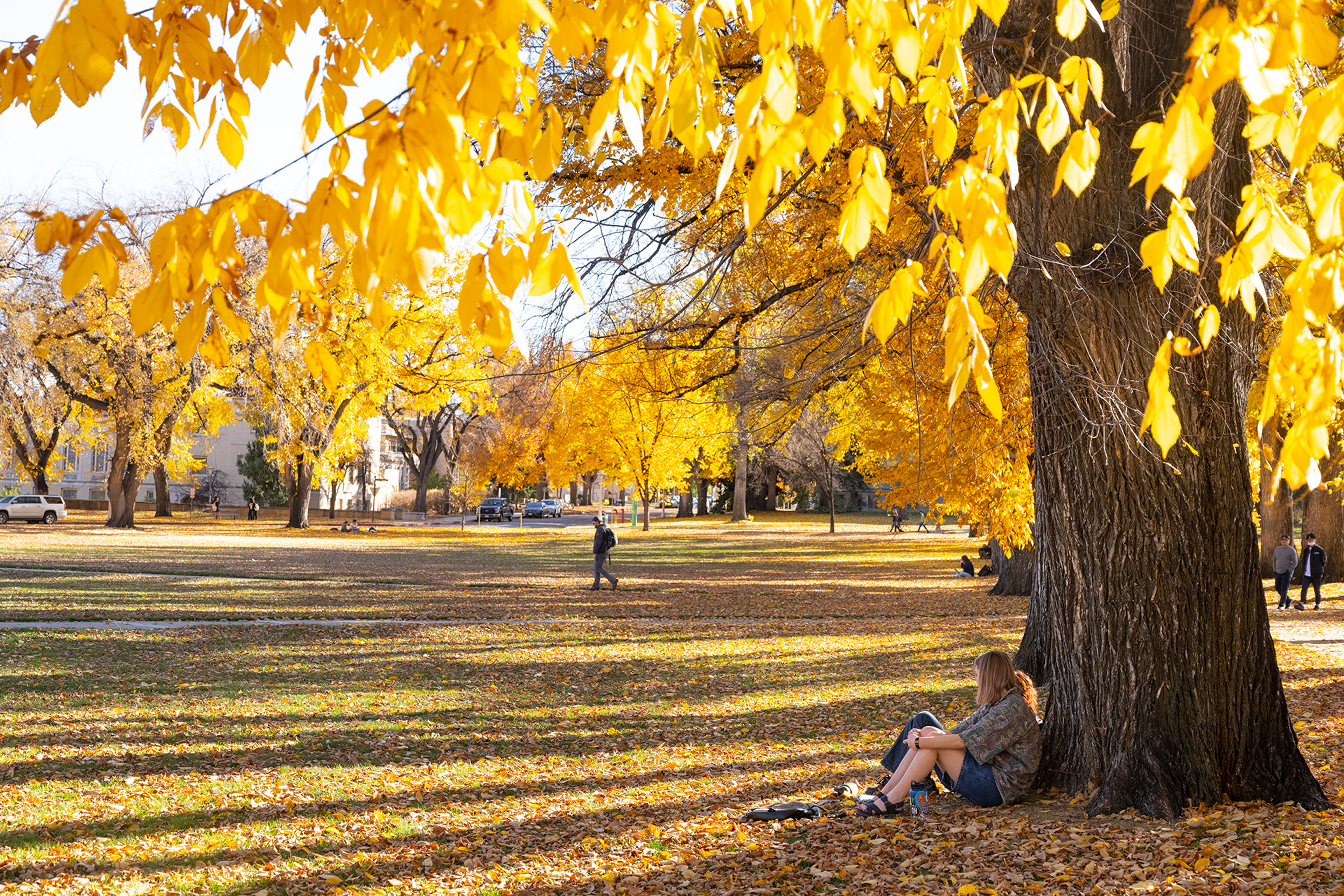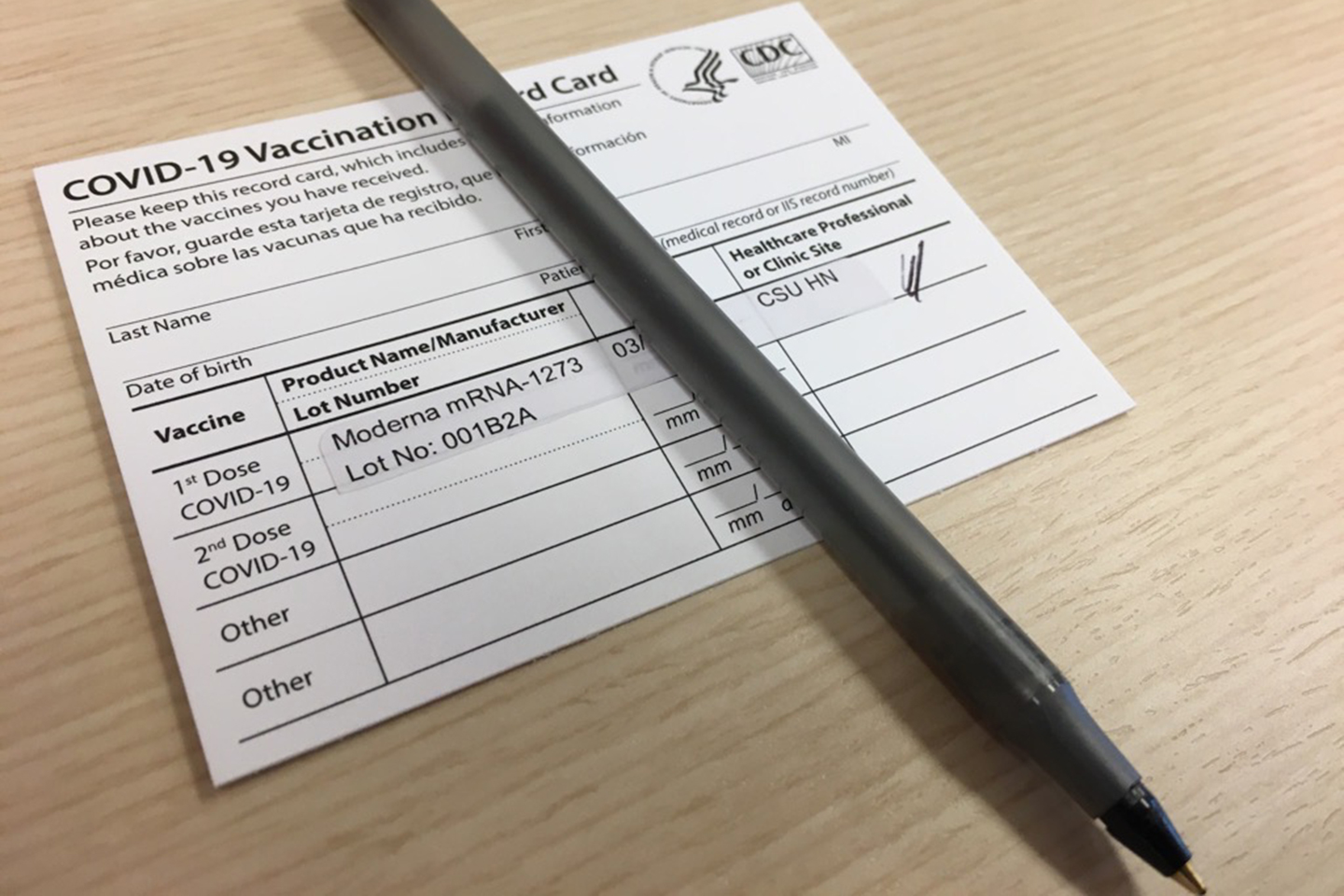
If there has been a singular truth about how Colorado State University has functioned during the pandemic, it is this: CSU succeeded together as a community this fall in keeping the COVID pandemic remarkably in check thanks to a long-standing University community value — old fashioned teamwork.
With a combination of strategic public health measures, a strong partnership with the Larimer County Public Health Department, and a constant eye on data, several university response teams collaborated to pilot students and employees through a successful, in-person semester with some remarkable benchmarks: to date, there are no known cases of transmission in an academic setting; the University’s high vaccination rate has helped keep Larimer County’s young adult COVID numbers low; nearly 90% of all classes were in person this fall; and more than 94% of all classes will be in person this spring.
All of this is possible because students, faculty and staff embraced a collective desire to be together on campuses, in classrooms, in offices, in labs, in workspaces.
Vaccine or screen

In April, the CSU System joined other Colorado higher education institutions in requiring a COVID vaccine or declaring an exemption. Thousands of students and employees got their vaccine cards filled and teams of CSU employees began working on creating secure infrastructure to gather vaccine information from students and employees, coordinate vaccine clinics with the Larimer County, build back-end data-tracking systems, develop screening practices for those who filed an exemption, and track thousands of weekly screenings for compliance.
The CSU Health Network created a system for students to submit their COVID vaccine status. Early in the spring the Health Network opened vaccination clinics for hundreds University employees and students, and served as the University partner in collaborating with Larimer County on 20 vaccine clinics on campus for students, faculty and staff – including clinics as early as March.
CSU’s Human Resources built a portal for employee vaccine information from scratch, providing employees with the ability to attest to their vaccine status or declare an exemption either online or by paper copy, and providing messaging in English and Spanish to ensure employees understood the process.
This enormous undertaking was accomplished in a few short weeks.
“98% of the community answered the call to wear a mask, get a vaccine or screen, and report when they had been exposed or had symptoms,” said Marc Barker, co-chair of the Pandemic Preparedness Team. “The University community’s response has been phenomenal. When we saw the delta variant emerge, and several mandates were implemented, we had one very simple, underlying goal: to keep the CSU community as healthy and as in-person as possible, so we could deliver the full campus experience to students.”
Keeping the community healthy through protocols
Once the vaccine or screen mandate was in place, the Pandemic Preparedness Team made a commitment to work with the community to confirm requirements were followed, ensuring health protocols worked and COVID could be managed on campus. This semester alone, the Student Resolution Center has sent more than 6,000 messages to students, many of them friendly reminders to remember to screen. More than 98% of the community had uploaded a vaccine record or exemption before the end of the fall semester.
“Tracking down students to get them to be compliant is not the work that anyone at the Student Resolution Center eagerly wants to do, but we do it because it’s important to the health of our students, faculty and staff.”
— Mike Katz, director of the Student Resolution Center
“Tracking down students to get them to be compliant is not the work that anyone at the Student Resolution Center eagerly wants to do, but we do it because it’s important to the health of our students, faculty and staff,” said Mike Katz, director of the Student Resolution Center.
“With a community of tens of thousands of individuals associated with the university, there are always those who have circumstances beyond their control that prevent them from being compliant. We encourage students in those situations to reach out to us and let us know. We are committed to working with them to figure out a situation. Our biggest ask is for patience; this is a massive undertaking with lots of wheels turning, and all of us are doing our best – including most of those who are required to screen twice a week.”
Why compliance matters
The compliance team plans to continue its work through the academic year. Ben Withers, dean of the College of Liberal Arts and co-chair of the Teaching and Learning Continuity Committee, points out that compliance completes the formula for the University’s academic delivery during COVID.
“Since the onset of the pandemic, faculty and staff have kept their eye on one very important commitment: to provide for our students an excellent academic environment,” Withers said. “That’s an extremely challenging thing to do during the heart of a pandemic. Rules and regulations are one thing, it’s another to ensure the classrooms and buildings and campuses were able to support academics on a daily basis. During a pandemic, public health compliance and excellent academics go hand-in-hand.”
Partnerships from offices across the University have been key in navigating the pandemic, as well as in obtaining compliance. The Pandemic Preparedness Team represents offices from across the University, including Safety and Risk Services, Public Health, the Health Network, Operations, Provost Office, President’s Office, Research, Student Affairs, Human Resources, and others. Groups helping to support the team include collaborations among University Housing, Parent and Family Programs, Fraternity and Sorority Life, Student Resolution Center, Information Technology, and faculty.
Withers recalls the angst of earlier days of the pandemic, based on lack of knowledge about COVID and fear of the unknown.
“Everyone came together from across the University, sharing information, working very long hours, making sacrifices and changes to their normal process for compliance, from changing the way we teach and learn to wearing a mask or screening. Our faculty, staff and students have been wonderful – they are as worried about each other as they are themselves. We should each have great pride in our community.”